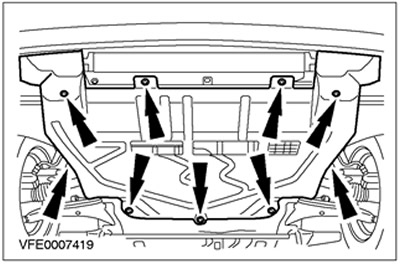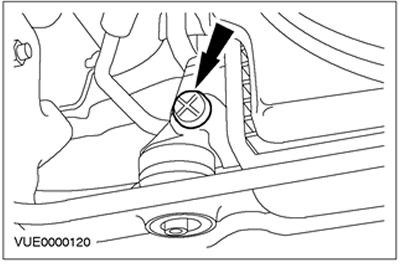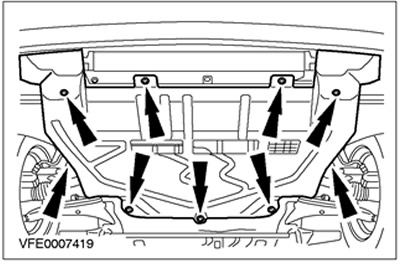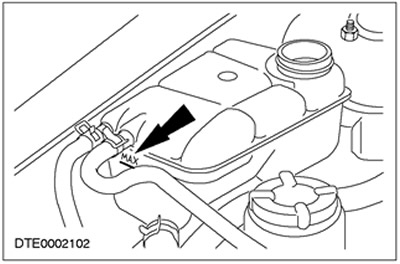Coolant drain
1.
WARNING: When relieving pressure in the cooling system, cover the expansion tank cap with a piece of thick cloth to prevent the danger of coolant scalding. Failure to follow this instruction may result in injury.
CAUTION: When draining the coolant or replacing any components of the cooling system, do not allow coolant to get on the timing belt or accessory drive belt. Remove the belt if necessary. Dirty belt can damage it.
CAUTION: When draining the engine coolant or replacing any components of the cooling system, be sure to replace the drained amount of coolant with coolant of the same specification. Failure to follow this instruction may result in damage to the cooling system and engine.
Relieve pressure in the cooling system. To do this, slowly turn the expansion tank cap a quarter of a turn.
2. After relieving pressure, remove the cap from the expansion tank.
3. Raise and support the vehicle. See Section 100-02 for more information.
4. Remove the motor protection.

5.
NOTE: Drain the coolant into a suitable container.
To drain the coolant, open the radiator drain valve.

6. After all the coolant has been drained, close the drain valve.
7. Install motor protection.

8. Lower the car.
Coolant filling
CAUTION: When draining the engine coolant or replacing any components of the cooling system, be sure to replace the drained amount of coolant with coolant of the same specification. Failure to follow this instruction may result in damage to the cooling system and engine.
1. Disconnect the heater supply hose from the engine.
2. Using a funnel, pour coolant into the cooling system through the supply hose until coolant starts to flow out of the engine.
3. Reconnect the heater supply hose.
4.
NOTE: Make sure the heater temperature control on the instrument panel is in the "NOT" ("Hot"), and the heater fan switch is in the off position. Make sure the air conditioning system is turned off.
Pour coolant into the expansion tank up to the mark "MAX" (with engine off).

5. Establish a cover of a broad tank.
6. Warm up the engine at 2750 rpm.
7. Do this in two fan cycles. Let the engine cool down and then recheck the coolant level.
Visitor comments